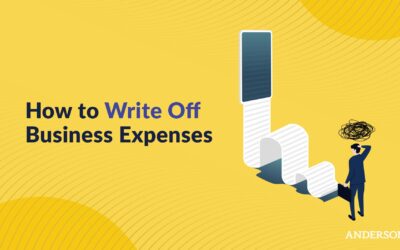
We all think about retirement sooner or later, and starting your retirement savings journey can help you be ready when that time comes around. This lets you still pay for expenses after you retire rather than having to work for years after you reach retirement age. Getting the most out of retirement contributions now can help you maximize the amount you have later and even let you retire earlier than you thought. A financial advisor can help you find ways to maximize your retirement accounts so you can save up the most while still enjoying your life now.
Key Takeaways:
- Maximizing retirement contributions now can help you grow your nest egg to meet all of your financial needs upon retirement.
- Starting early and, at least, meeting the amount an employer will match to your retirement account are two ways to help you maximize your contributions.
- Different retirement plans have various contribution stipulations and caps, so having multiple retirement accounts can help you contribute the most to your plan.
Tax & Asset Protection Workshop
Learn about Real Estate & Asset Protection at our next
FREE LIVE STREAM
How To Maximize Retirement Contributions
Different retirement plans have slightly diverse ways to maximize your contributions. Knowing their little variations can help you get the most in your account, which can make a world of difference later. Here’s how you can maximize your contributions for different types of retirement accounts:
Employer 401(k)
The first thing to know about maximizing your 401(k) contributions is that if your employer matches a certain limit, you want to allocate at least that much into your account. Usually, this is around 2% to 4%. So, what this means is that if your employer matches up to 4% of your contributions, you want to be allocating at least 4% of your income to that retirement account. That way, you aren’t missing out on potential employer contributions.
In addition to making sure you’re at least matching the level of your employer’s contributions. Some employers also have vesting rules for company-match contributions. Simply put, you must work a certain length of time before those employer-funded deposits are entirely your own. This encourages you to stay longer at a company so you can keep all of the company’s contributions.
Personal 401(k)
When you invest in a personal 401(k) aside from the one offered by your employer, you can take advantage of other avenues to grow your assets, which can better prepare you for retirement.
While you can’t spend the funds in your retirement account until you reach a certain age, you can roll those funds into real estate investment activities. This can result in better returns as you can choose to invest in real estate or opt for the more hands-free approach of real estate investment through private equity firms. A personal 401(k) also enables you to invest in other assets, such as the following:
- Cryptocurrency.
- Precious metals.
- Promissory notes.
Regarding real estate, self-directed accounts let you invest in more than single-home residential structures. You can passively invest in real estate, such as multifamily apartment complexes, retail facilities, office workspaces, and self-storage buildings.
Individual Retirement Account (IRA)
Similar to the 401(k) accounts, contributing the maximum amount to an IRA will better prepare you for your financial future in retirement. Contributions cap out around $6,000 to $7,000 annually, making this a great option if you have additional retirement accounts.
Roth Accounts
There are two types of Roth accounts to choose from: Roth 401(k)s and Roth IRAs. The key difference between Roth retirement accounts and traditional 401(k) and IRA accounts is that these contributions already have income taxes applied to them, making the distribution of these accounts tax-free.
Health Savings Accounts (HSAs)
If you’re eligible, you can also start contributing to a health savings account. These accounts are available to those with high-deductible health plans. High-deductible health plans are considered those that have a deductible of $1,400 or higher for an individual or $2,800 for a family. You can get the most out of this saving account by trying to contribute the maximum amount in a given year. The benefit of doing this is that your contributions going in are tax-free, and if you need to withdraw for a qualified medical expense, that’s tax-free as well.
How To Deduct Over $100,000 per Year From Your Retirement Plan
If you’re a business owner wanting to set aside funds for retirement, you might consider a cash balance pension plan versus other retirement plan options. A cash balance pension plan is a defined-benefit pension plan that also gives business owners the option of a lifetime annuity. This is an excellent choice that will set you up nicely if you’re a high-income earner and you have a set idea of what you want your retirement figures to look like.
Pro Tips for Retirement Savings
Here are some pro tips to implement that can help you maximize the potential of your retirement accounts:
Take Advantage of Catch-Up Contributions
If you’re 50 or older and want to boost up your retirement accounts because they aren’t where you want them yet, you can take advantage of catch-up contributions as of the calendar year you turn 50. This lets you go beyond the normal contribution limits of 401(k) and IRA plans. New contribution limits differ between the two plans but were an additional $1,000 for IRA accounts in 2023.
Pay Yourself First
Rather than setting aside time each month to manually allocate your contributions, setting up automatic contributions to your accounts can make it easier for you. Plus, it’s easier to budget when you haven’t seen your funds before setting them aside. Paying your retirement accounts first through automatic payments can also ensure that you don’t forget to make these contributions.
Establish a Budget
Making a personal budget can help you better manage your accounts and find ways to increase your retirement contributions without having to sacrifice in your day-to-day life. This can also help you discover and stop frivolous spending, leaving more investment opportunities.
Find Ways To Save More
Aside from creating and adhering to a budget, finding other ways to save can help you better allocate your money to retirement. For example, you might negotiate a lower interest rate on your car, refinance your home for a lower monthly mortgage, or pay off that lingering loan. This helps you redirect funds that were going toward assets, such as a car or home, to your retirement accounts, where they can grow.
Set Financial Goals
Financial goals can help you stay motivated and monitor your account growth. Setting time-bound and realistic goals can make it all that more satisfying as you breeze past them onto the next one. Setting financial goals can also help you stick to a budget and reduce unnecessary spending.
Consider Delaying Social Security
Delaying Social Security can increase the amount you receive in the future. Each year you decide to wait can increase your monthly income, resulting in higher liquid assets when it comes to retirement.
Let Anderson Advisors Help You Maximize Your Retirement Accounts
Whether you’re an investor, retiree, or business owner, knowing how to maximize your retirement accounts now can set you up for success in the future. If you need help with creating a retirement plan to maximize your contributions, speak with our team of advisors at Anderson Advisors and start saving for your tomorrow, today.
Free Strategy Session with an Anderson Advisor
Receive a detailed risk assessment to assist in lowering problem areas that could wipe out all of your assets with one wrong move. Speak with an Anderson Professional Advisor to get your FREE Strategy Session. Limited-Time Offer: FREE (a $750 value.)














